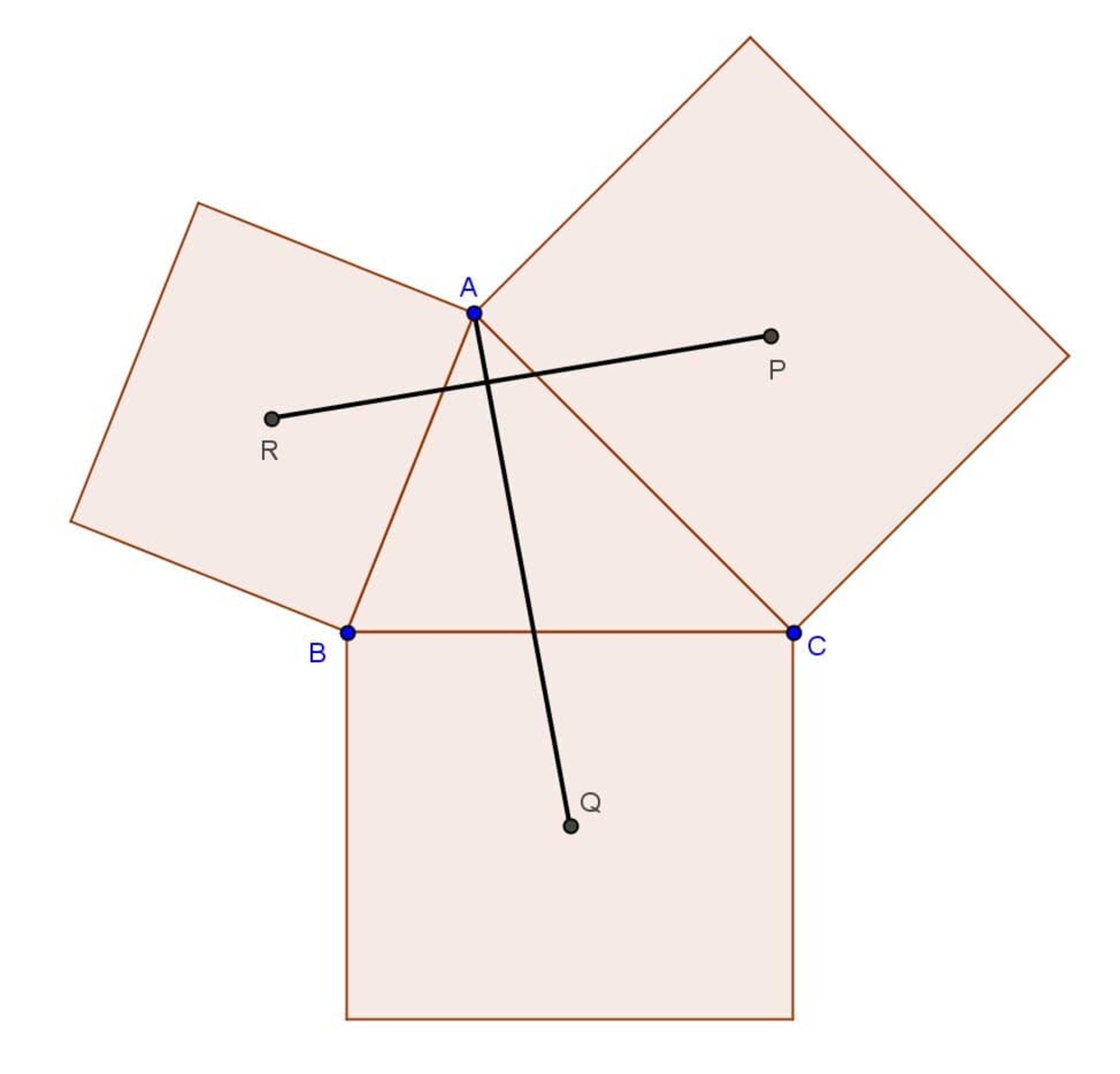Geometry problem of a triangle

Look at the figure. it is given a scalene triangle ABC. A square are drawn in each of its sides. If points P, Q and R are the centers of the square. Prove that: 1. RP perpendicular to AQ and 2. RP = AQ.
No vote yet
1 vote
Easy Math Editor
This discussion board is a place to discuss our Daily Challenges and the math and science related to those challenges. Explanations are more than just a solution — they should explain the steps and thinking strategies that you used to obtain the solution. Comments should further the discussion of math and science.
When posting on Brilliant:
*italics*or_italics_**bold**or__bold__paragraph 1
paragraph 2
[example link](https://brilliant.org)> This is a quote# I indented these lines # 4 spaces, and now they show # up as a code block. print "hello world"\(...\)or\[...\]to ensure proper formatting.2 \times 32^{34}a_{i-1}\frac{2}{3}\sqrt{2}\sum_{i=1}^3\sin \theta\boxed{123}Comments
Here's a proof if you're familiar with complex numbers:
Let the complex numbers a,b,c stand for the points on the triangle. Then p=c+22(a−c)ei4−π=c+22(a−c)(21(1−i))=c+21(a−c)(1−i)
p=21c(1+i)+21a(1−i)
By analogy,
q=21b(1+i)+21c(1−i)
r=21a(1+i)+21b(1−i)
Giving,
a−q=a−21b(1+i)−21c(1−i)
p−r=21c(1+i)+21a(1−i)−21a(1+i)−21b(1−i)
=21c(1+i)−ia−21b(1−i)
=−ia+21b(i−1)+21c(1+i)
=−ia+21b(i−1)+21c(i+1)
=−i(a−21b(1+i)−21c(1−i))
=e−i2π(a−q)
QED
I was expecting proofs along the lines of complex numbers of vectors, which would be considered a standard exercise. There's a more basic approach, which uses similar ideas.
Hint: Let the square be labelled ABDE. Consider triangles ABQ and EBC. Consider triangles ARC and AEC. Hence, we get fact 2. Show further that EC makes a 45∘ angle with both AQ and RP, which gives fact 1.
Log in to reply
Thank u mr calvin for your hint. Just want to give a correction. Is it true that we should consider ARC and AEC, i think we should consider triangle ARP and AEC. Thank u. It was helping me a lot.
thank u...